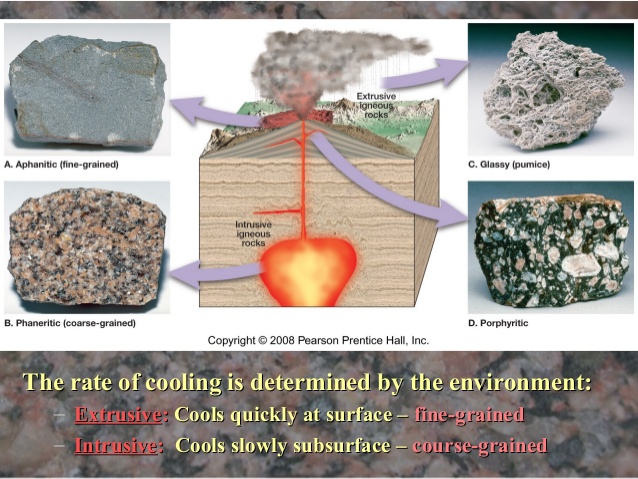As Gary mentioned, it really depends on particular context for your mountain. How did it form? Is it volcanic in nature? Or maybe just old rocks being uplifted by some episode of compression.
On average, Earth's crust is pretty much granite. So chances are that you will find that inside your mountain. That wouldn't be a bad assumption. Granites form by cooling magma slowly, so most volcanic-type mountains are made of granite or something similar. For example, the Andes (below) are made of fine-grained Andesite near the surface and Diorite (Andesite's coarse-grained version, which is similar to Granite, but not quite) at depth.

In the case of cooling magma to form rocks, the slower the cooling, the larger the crystals will be. So rocks that cooled near the surface, will be composed of tiny crystals while rocks that cooled deeper will have larger crystals.

You could argue for more exotic rock types but that would imply a slightly more complex geological history (which is totally possible). For example, you could have uplifted a huge package of sedimentary rocks without any volcanism involved. Or you could have simply eroded everything around leaving large rock packages like the Venezuelan Tepuis (below).

In general, the rocks deep inside a mountain (or simply super old rocks) have also undergone a lot of compression, so sedimentary rocks will be unlikely as you would have converted them into metamorphic rocks, e.g. limestones would be marble, sandstones would be quartzites (like the Tepuis), shales would be slates (or schists, etc.), etc.
Similarly, metamorphic rocks that have undergone a higher degree of compressional and thermal stress (i.e. deeper in the mountain) will grow larger crystals.

Of course, like anything in geology, other complex scenarios do exist where these rules of thumb don't work. But in general, this should get you started.
Anyway, hope that helps.



